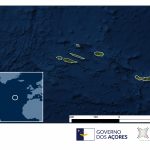
Fostering research excellence
in EU Outermost Regions


Fostering research excellence
in EU Outermost Regions

Azores is an archipelago composed of nine volcanic islands in the North Atlantic Ocean about 1,360 km (850 mi) west of continental Portugal, about 1,643 km (1,021 mi) west of Lisbon, in continental Portugal, about 1,507 km (936 mi) northwest of Morocco, and about 1,925 km (1,196 mi) southeast of Newfoundland, Canada. Azores is one of the two autonomous regions of Portugal (along with Madeira). As part of Portugal, the Azores are in the European Union and in the Schengen Area.
An Autonomous Region since 1976, Azores statute is enshrined in the Constitution of the Portuguese Republic. The Regional Government and the Legislative Assembly are self-governing bodies of the Autonomous Region of the Azores. The Assembly is elected by direct universal suffrage and has a wide variety of political and legislative competences.

The Azores total land area is 2,322 km2 and it’s marine area is 23,663 km2. The exclusive economic zone of the Azores is 930,687 km2, the third largest in Europe. The protected land area is 99 km2 and the marine protected area is 11,175.04 km2.
The archipelago is spread out in the area between 37° N and the parallels of latitude that pass through the Lisbon area (38° 43′ / 38° 55′ N), giving it a generally tepid, oceanic, subtropical climate, with mild annual oscillations. Daily maximum temperatures usually range between 15 and 25 °C (59 and 77 °F). The average annual rainfall increases from east to west, ranging from 700 to 1600 millimeters (27.6–63 in) in the east and reaching 6,300 millimeters (250 in) on Mount Pico, the highest Portuguese mountain at 2,351 m (7,713 ft).
The total population is 244,571 individuals. The population density is 106.30 (inhabitants/km2). The most populous island is S. Miguel with 137.699 inhabitants and the less populated Island is Corvo, with 430 inhabitants.
The population by age groups is distributed as follows:
39,328 inhabitants < 15 years;
171,030 inhabitants 15 < Age < 64;
34,306 inhabitants > 64 years.
The birth rate is 9.1 and the mortality rate is 9.2.
In 2018 the gross domestic product value was 3.731 billion euros. GDP per capita was 15,995 euros; the unemployment rate was 8.6%. The main economic activities are agriculture, fisheries, tourism the production of geothermal renewable energy. Currently the region produces 40% of the energy it consumes, but it is expected to reach 60% in 4 to 5 years. The region is dependent on imports from mainland and Europe.
The Intelligent Specialization Strategy (RIS3) in Azores was defined according to the endogenous competitive advantages and international specialization and aligned with regional political priorities and the potential for economic development, as well as job creation in the region. The selection was narrowed down to 3 areas:
– Agriculture, Livestock and Agroindustry;
– Fisheries and Sea;
– Tourism.
The Azores aim for the knowledge economy, translated by the participation in European projects, namely in Horizon 2020 and Interreg programs (namely MAC, Europe and Atlantic Area). This participation has been contributing to the development of Innovation and consolidation of the scientific capacitation in the Region. This has allowed Azores to reinforce the economic axis on Investigation, Development & Innovation and engagement in the the European Research Area.
The University of the Azores (UAc) is the only one in Azores, with 216 professors and 2,594 students. The UAc is structured in three campus located on the islands of São Miguel, Terceira and Faial, and comprises university and polytechnic organic units.
The scientific and technological system of the Azores consists of 26 entities from research centers to technological infrastructures. The investment rate in research in Azores is 0.70% of the GDP.